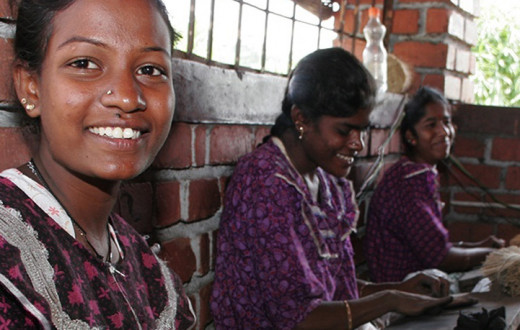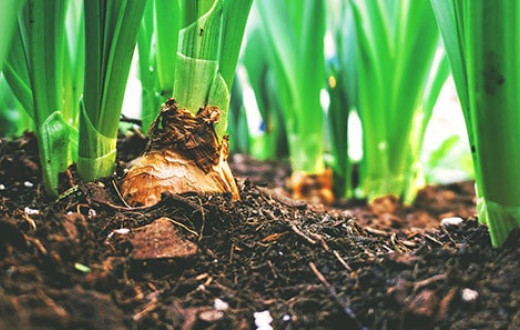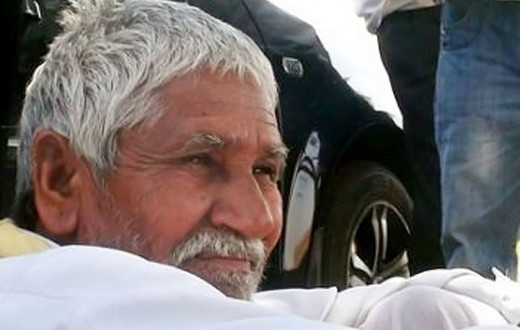Overview
In November 2017, the Department of Panchayati Raj, Government of Jharkhand, partnered with The Art of Living’s Vyakti Vikas Kendra India Trust - Youth Leadership Training Programme wing - for enhancing good governance parameters and ensuring socio-economic empowerment in 60 Gram Panchayats of Jharkhand. The project aimed to create a replicable model of grass-roots governance in 60 select Gram Panchayats as ‘Beacon Gram Panchayats (GP)’ (approximately 350 revenue villages) impacting over 3.5 lakh population. Beacon GP initiative is a model for social-economic empowerment of the rural communities through effective governance changes at the ground. The project was spread across 7 districts in Jharkhand - Ranchi, Bokaro, Saraikela Kharsawan, Palamu, Chatra, East Singhbhum, and Khunti. The project ran from November 2017 to March 2019.

The project has been a good example of partnership between the civil society and the Government of Jharkhand, for empowering Panchayats and representatives of the Panchayati Raj Institutions (PRIs).
Why it began?
The Panchayati Raj model in India supports the world’s biggest endeavor in grass-roots governance taking place in India. Taking into account local needs, the elected representatives of PRIs play a key role in decision-making process of various government programs to be implemented in the respective panchayat. They also ensure the community’s involvement in the formulation and implementation of rural development programs. It is important to build the capacity of the elected representatives to carry their mandated functions as their role is crucial to rural development.
Jharkhand being a young state, training the elected representatives is extremely essential. Through the Beacon GP project, we aimed to train and build their capacity as elected representatives. We also mobilized the community to play their part in the Panchayati Raj model.
Project objectives
The project worked on improving good governance, empowering the community economically, and improving civic amenities.
1. Good governance:
- Enabling elected representatives to upgrade their knowledge and skills to better perform their responsibilities
- Sensitizing community stakeholders to accept and promote the Panchayati Raj as an essential level of local government and for inclusive and participatory development
- Improving the functioning of Gram Sabha (the primary body of Panchayati Raj system) as an important institution of local decision making
- To strengthen rural local self-governance at Gram Panchayat level through increased community participation and empowerment of Gram Panchayat elected representatives as well as other functionaries in Gram Panchayat.
- To sensitize the community towards government schemes and policies to get maximum outputs
- To motivate village youth to take responsibility and act as change agents for a vibrant and self-sustained village
2. Economic empowerment:
- To promote livelihoods through entrepreneurship and skill education
- To empower women socio-economically and politically
- To facilitate and create capacity strengthening opportunities for substantial economic and livelihood gains of the poor communities and vulnerable households
3. Improvement of civic amenities:
Learn Sudarshan Kriya, a powerful breathing technique driving our volunteer community with vitality and focus.
- To create an equitable, just, and crime-free society by inculcating human values and harmony in diversity
- To spread awareness about the ill-effects of alcohol consumption and substance abuse
- To promote yoga, Ayurveda, indigenous cattle rearing, and natural farming methodologies
- To create awareness for protecting the environment
- To create awareness regarding sanitation and understand the hygiene concepts through awareness
Achievements
Activation of Gram Sabhas, extensive participation of PRIs in training, strengthening of institutional processes of Gram Panchayats and enhanced participation of communities in local governance are the project’s key achievements. Our tailor-made training for different stakeholders played a crucial role in helping us achieve the above.
There were nine types of training that were delivered to elected representatives, Panchayat functionaries, Self-Help Groups, elected women representatives and Panchayat volunteers to inspire and strengthen them to work for the socio-economic empowerment of the communities. Following are the number of participants for which these workshops were held:
154 Panchayat volunteers
594 Panchayat level department functionaries
280 elected women representatives
616 Gram Panchayat standing committee members
737 Self-Help Group members
413 Gram Panchayat executive committee members on cashless transactions
Testimonials
Panchayat training improves harmony in the village
“The Beacon Gram Panchayat training has helped me in various ways to gain confidence and in-depth knowledge about a Panchayat and its functions. With the training, everyone including ward members and Panchayat volunteers developed their understanding regarding the work and functioning of the Panchayat and worked with the people of the villages with this new understanding. With this, harmony has increased a lot in the village. Internal conflicts too are on the decline and for whatever internal conflicts that do occur, we, in the Panchayat are better equipped to handle it. Only the cases which are beyond our ability to resolve, reach the police or the court.”
-Sunila Devi, Mukhiya (leader of panchayat), Bhandro panchayat, Jharkhand

Self Help Group trained in mushroom cultivation and making phenyl
“During this Beacon Gram Panchayat training, we receive the training in mushroom cultivation. Last time, one of us had planted, it was only for the consumption of the family. It was good to eat. So, this time, 7-8 of us have come together and planted it together. We have set up the mushroom cultivation in 4 rooms of the same house, hoping to harvest around 200 packets of Mushroom. We will try to sell it after drying as that brings greater profit. Few of us also received training in phenyl making. 1litre of the compound chemical helps us in making about 18-20 litres of phenyl. Currently, we are making for our own consumption and distributing it among our friends and relatives. This has helped us in saving our monthly expenses on phenyl.”
- Unanimous testimonial of Self Help Group women members, Gidhour panchayat, Jharkhand











